Statement
The level of education among the youths of a society has a direct relationship with its development and modernization process. The level of education and the statistics of educated youths in a society are considered to indicate the dominant culture and a prerequisite for moving towards the prosperity of the society. Therefore, this survey examines the rate of educational drop outs among young people and its consequences on the Afghan society. This Survey has investigated the number of educated young individuals, the effectiveness of their education, and it has also investigated the reasons for missing or dropping out of education among young people. In this survey, an attempt is made to clearly show the social, economic and cultural effects of educational failure on the society and provide possible solutions to reduce the educational drop out rate.
Background
Education, as an important indicator in the development of societies, has a great role to play in its process. Various researches have been conducted in the field of youths’ education in Afghanistan and various results have been obtained from them. These researches have analyzed the factors affecting education, barriers to staying on course, the effects of education on the society and solutions to reduce educational drop out rate. However, comprehensive research on drop out rates among young people and its consequences have been limited.
By selecting a sample of young people, this survey provides statistics on their education level and examines its effects. Also, the survey explores the lives of young people who are left out of higher education for various reasons. With a better understanding of these issues, more effective solutions can be provided to reduce educational drop outs and improve the education situation.
Main questions
- Among the statistical population in this survey, how many of them are educated?
- How many of the young people interviewed in this survey are left out of studying?
- How effective is higher education for young people in daily life?
- Why are some young people left out of higher education?
Objectives
- Examining the educational status and the level of dropping out among young people.
- Providing statistics of young people who are left out of education.
- Getting the reasons why young people stop studying.
- The effectiveness level of young people’s education in their daily life.
- Consequences of young people’s failure to study in the society.
Survey timeline
The preparation of this survey started on January 1, 2024 and ended on February 21, 2024.
Method of data analysis
As per reporting and collecting statistics, this survey has been conducted in the field via forms (questionnaire distribution) and has been analyzed and explained using SPSS program.
Survey challenges
Conducting any research and survey in Afghanistan is not without its challenges; therefore, this survey too faced the following challenges:
- Inadequate collaboration of the statistical population to conduct the survey.
- Limited facilities.
- Lack of work force to conduct the survey.
Survey variables
Dependent variable
- The rate of academic drop out among young people.
Independent variables
- Educational status of young people (educated or left out of education).
- Reasons for missing and dropping out of education (economic problems, lack of interest, job opportunities, family and social status, etc).
- The effects of academic drop outs on societies (economic, social, cultural, etc).
On the other hand, other variables may also be examined such as age, gender, parents’ education, etc., which may affect the rate of academic drop outs.
Compact report
Findings of Salam Watandar’s survey show that academic drop outs among young people in Kabul is a serious problem that occurs for various reasons, including economic problems, lack of interest, lack of family support, and unfavorable educational conditions. This has caused concern among young individuals and has negative effects on their future. Some 87.2% of the participants in the survey said they are worried about their future.
However, there is a strong interest among young people to continue their studies if conditions improve. This shows the desire of young people to use educational opportunities to improve their individual lives and the society. Also, the opinion of the majority of young people about the importance of education in the growth and development of society is positive.
According to many young people, educational conditions in Afghanistan are less favorable or not favorable at all. Nevertheless, young people value their education and confirm its positive impact on their lives. Also, many young people are dissatisfied with their income despite having a higher education, due to the mismatch between their work and education field or unemployment rate.
In order to improve the educational situation and reduce educational attrition, special attention should be paid to economic problems, providing suitable educational conditions, and support of families in the education of young people. The support of the government and related institutions can also play an important role in providing these conditions.
Survey report
Salam Watandar launched a survey in Kabul in order to investigate the level of educational retention among young people and its reasons, the effectiveness of education in society, the consequences of dropping out of education in society, and the level of satisfaction of educated youths with their education. In this survey, some 320 young peoples’ answers have been taken into consideration. In this survey, out of 320 participants, 63 (19.7%) are women.
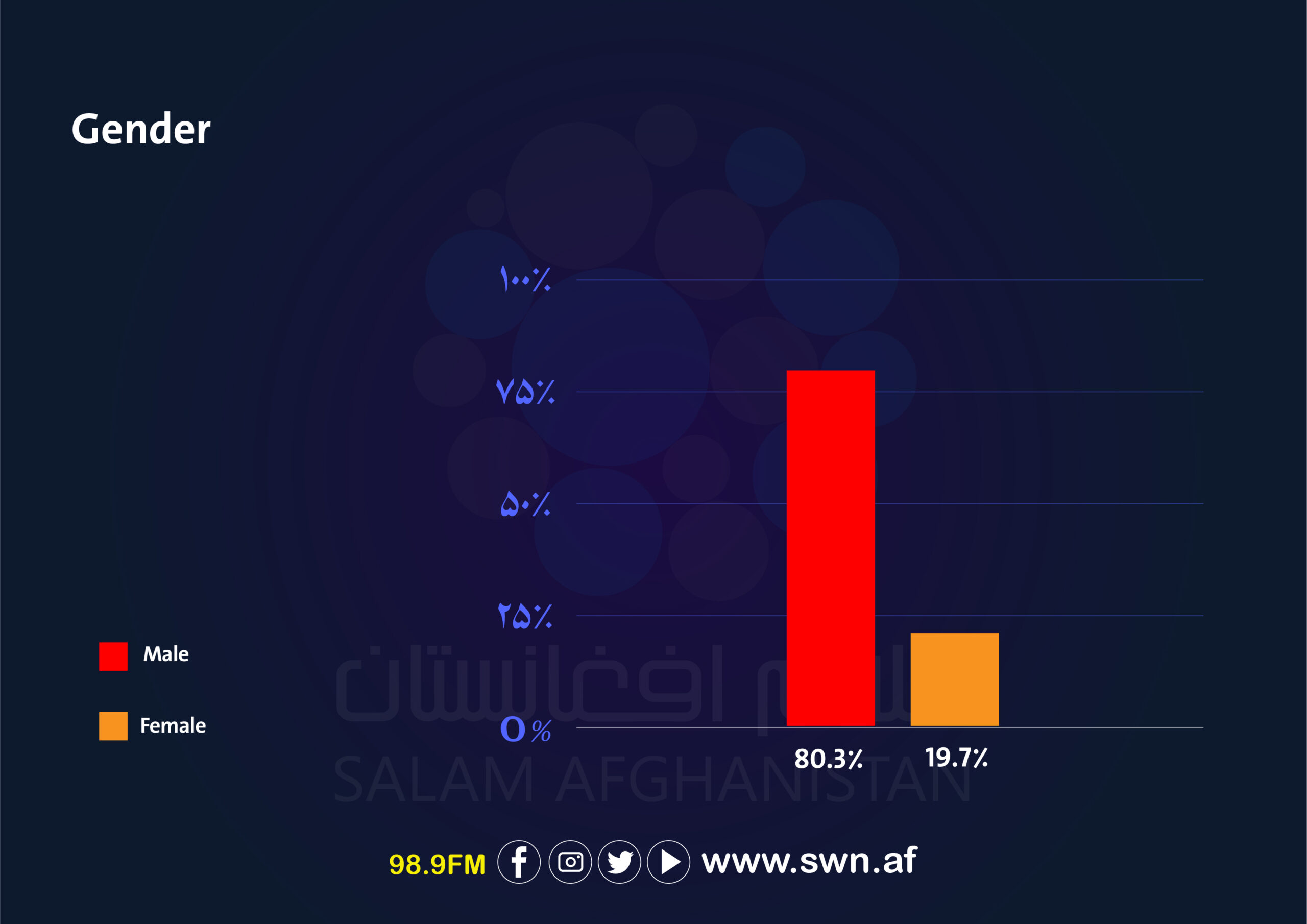
In this survey, the age group of the participants was examined. 48.4% of the respondents were between 18-24 years old; 31.9% between 25-30 years; 18.4% are between 31-40 years old, and only 4 (1.3) of those surveyed, are over 40 years old.
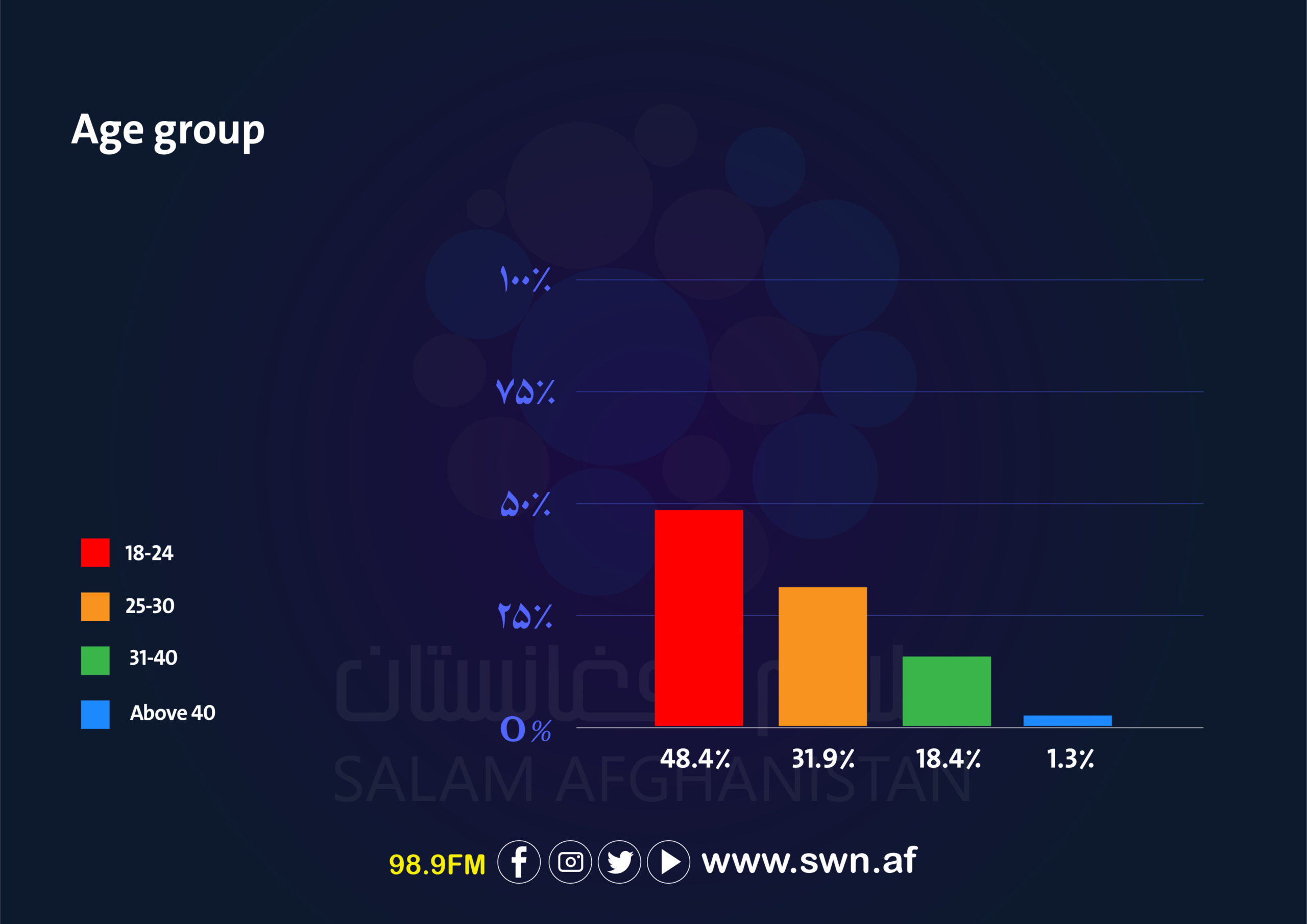
About 58.1% of the respondents in the survey are single and 41.9% are married.
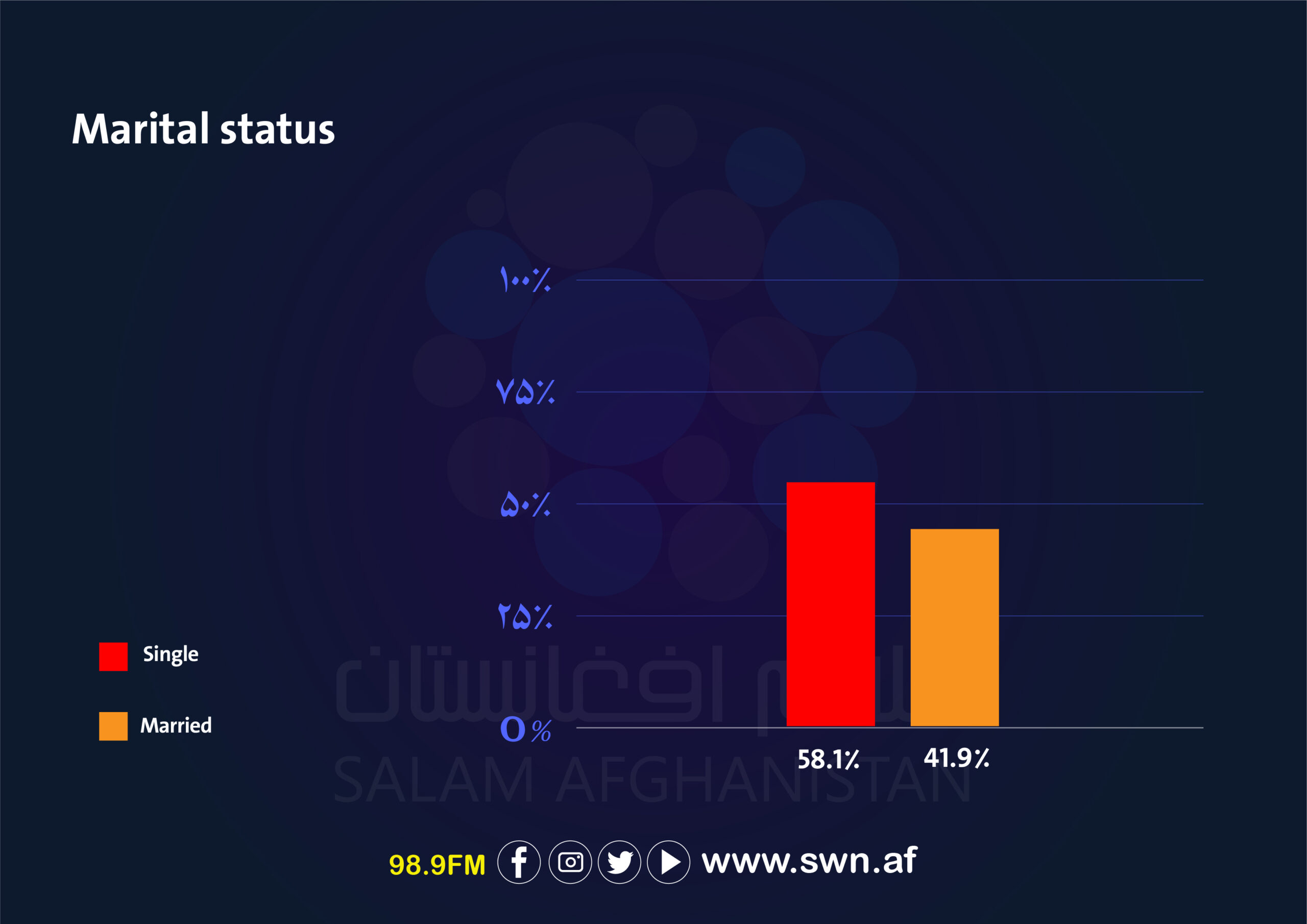
The level of education among the respondents was also examined; 36.9% have bachelor’s degree, 32.5% are school graduates, 12.3% have primary education, 10.7% associate degree/post-baccalaureate, 3.8% have master’s degree, 3.5% are illiterate, and 0.3% have studied up to doctorate (PhD) degree.
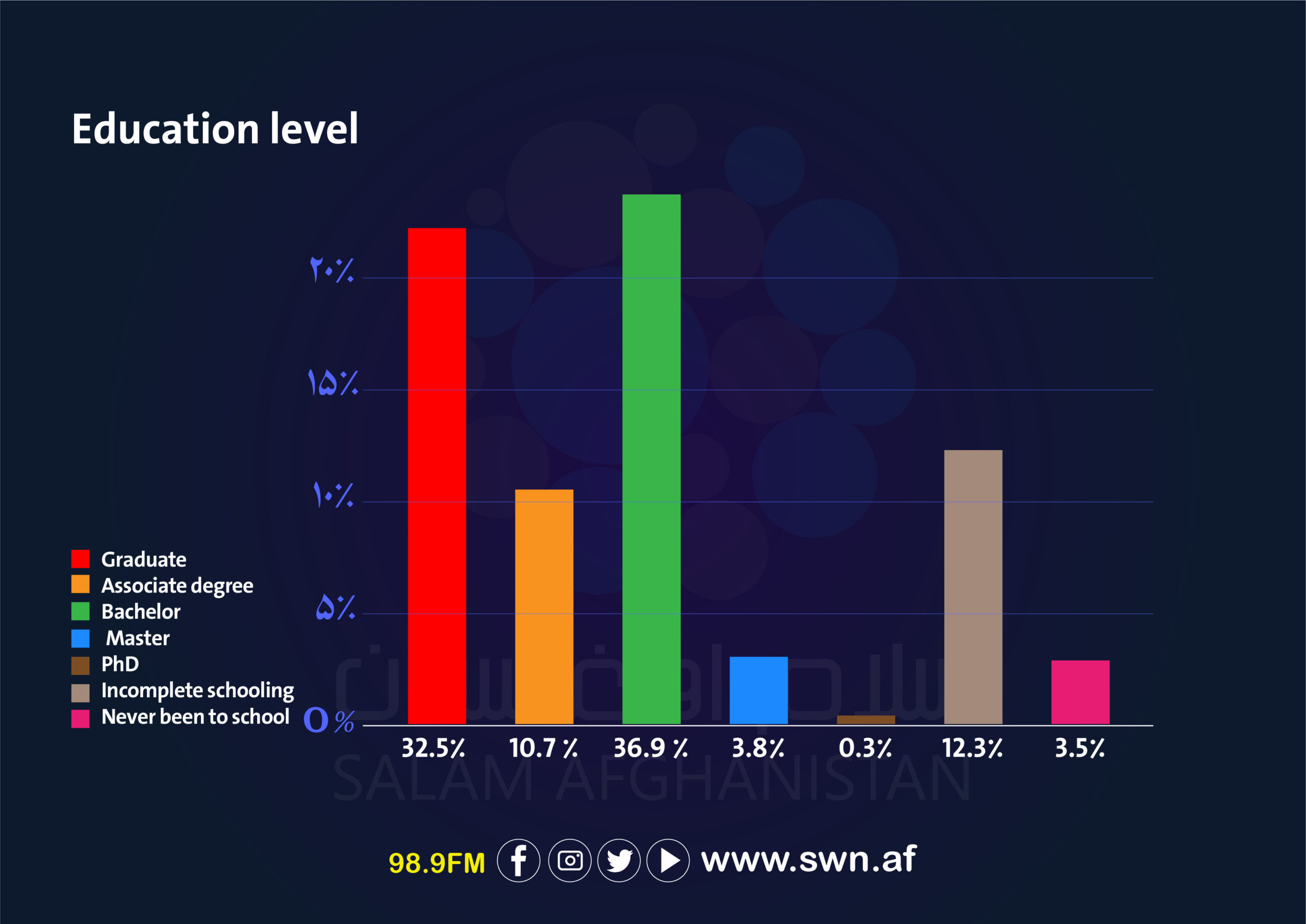
In this survey, the number of young people who are left out of education or dropped out, has also been investigated, and in total, 58.9% of the respondents are those left out of education.
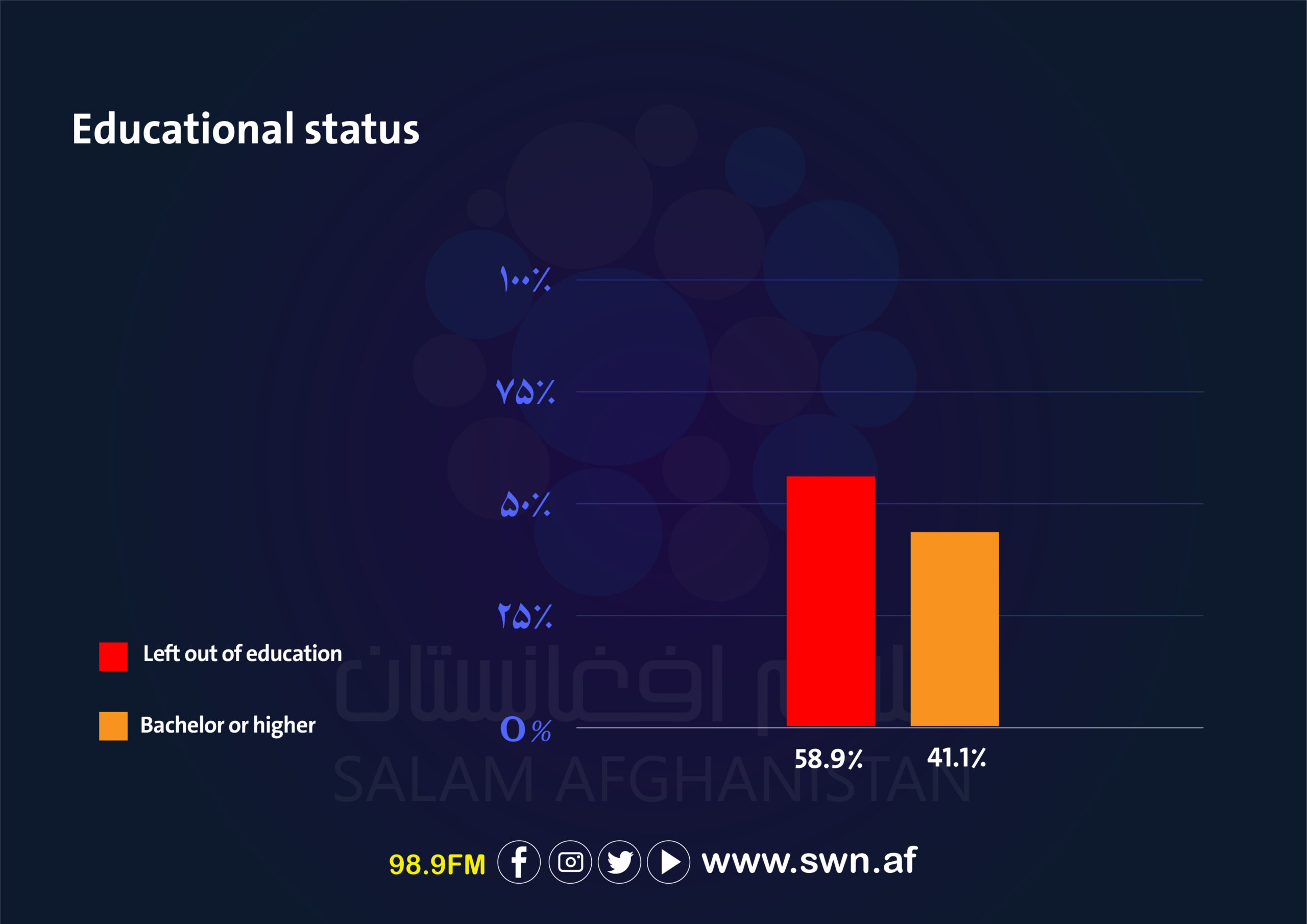
The reasons for the educational attrition among young people have been investigated. 51.1% of the respondents said that it was due to economic problems, 27.1% due to lack of interest or hopelessness, 11.7% due to lack of family support or early marriage, and another 10.1% due to unfavorable educational conditions in the country.
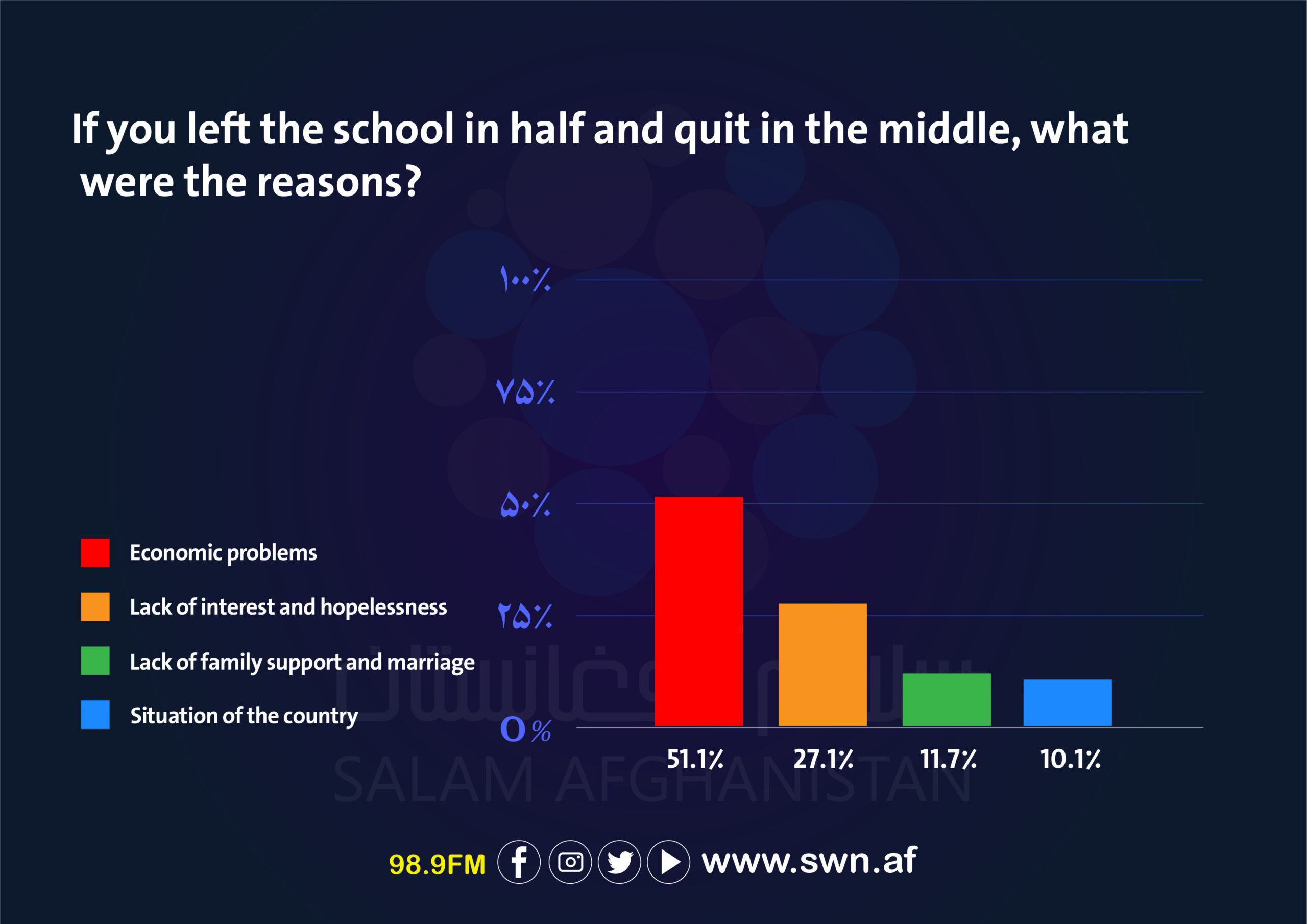
The level of concern among young people who left education and participated in this survey was also examined; 87.2% said that they are worried about their future, 5.9% said that their concern is less, and another 6.9% said that are not educated, they have no worries.
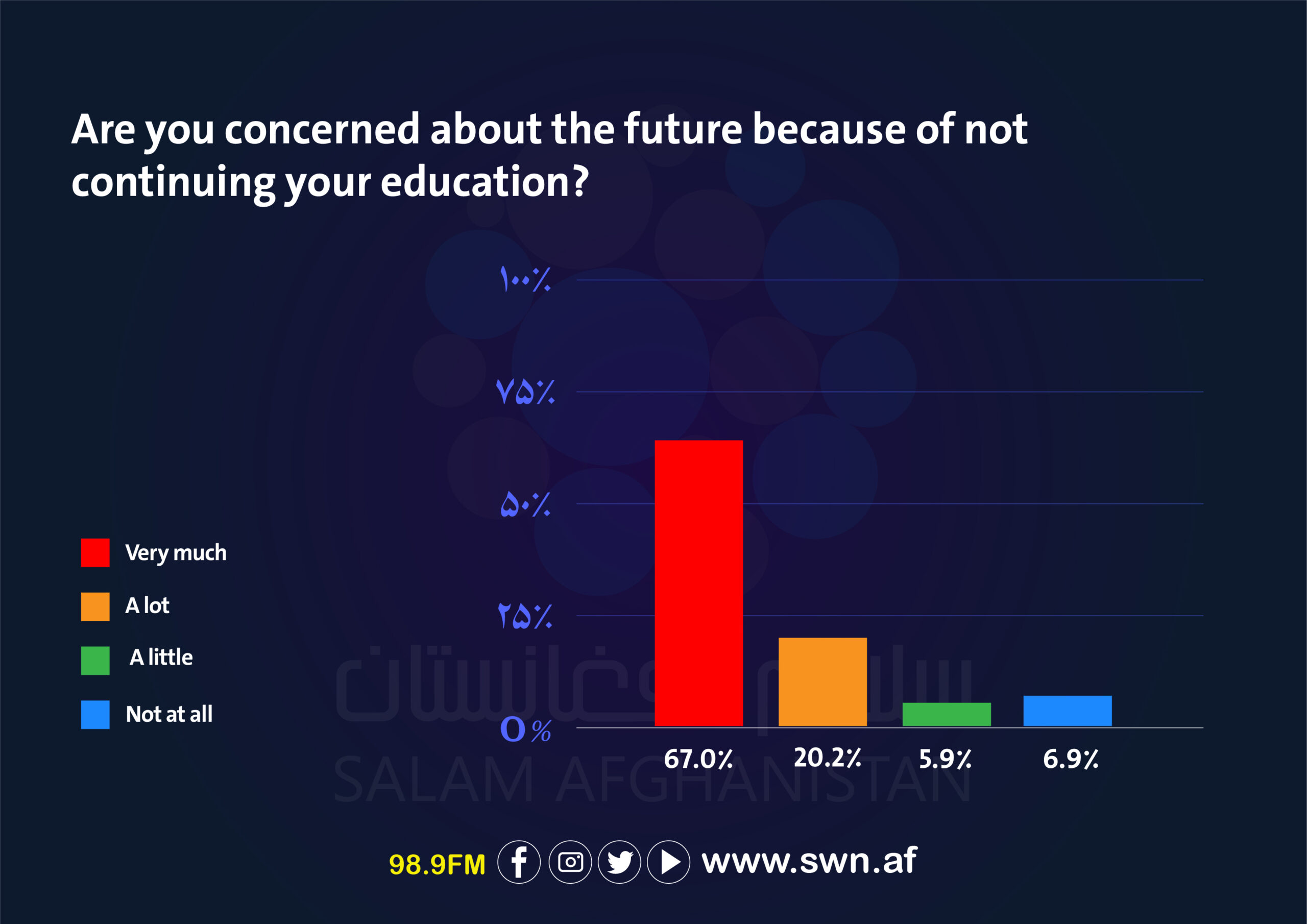
In this survey, the interest of young people who have been left out of education but wanted to continue, was also investigated; 79.8% of the respondents said that they want to continue their education if the conditions improve. However, another 20.2% said that the time for their education has been lost and they did not want to continue studies anymore.
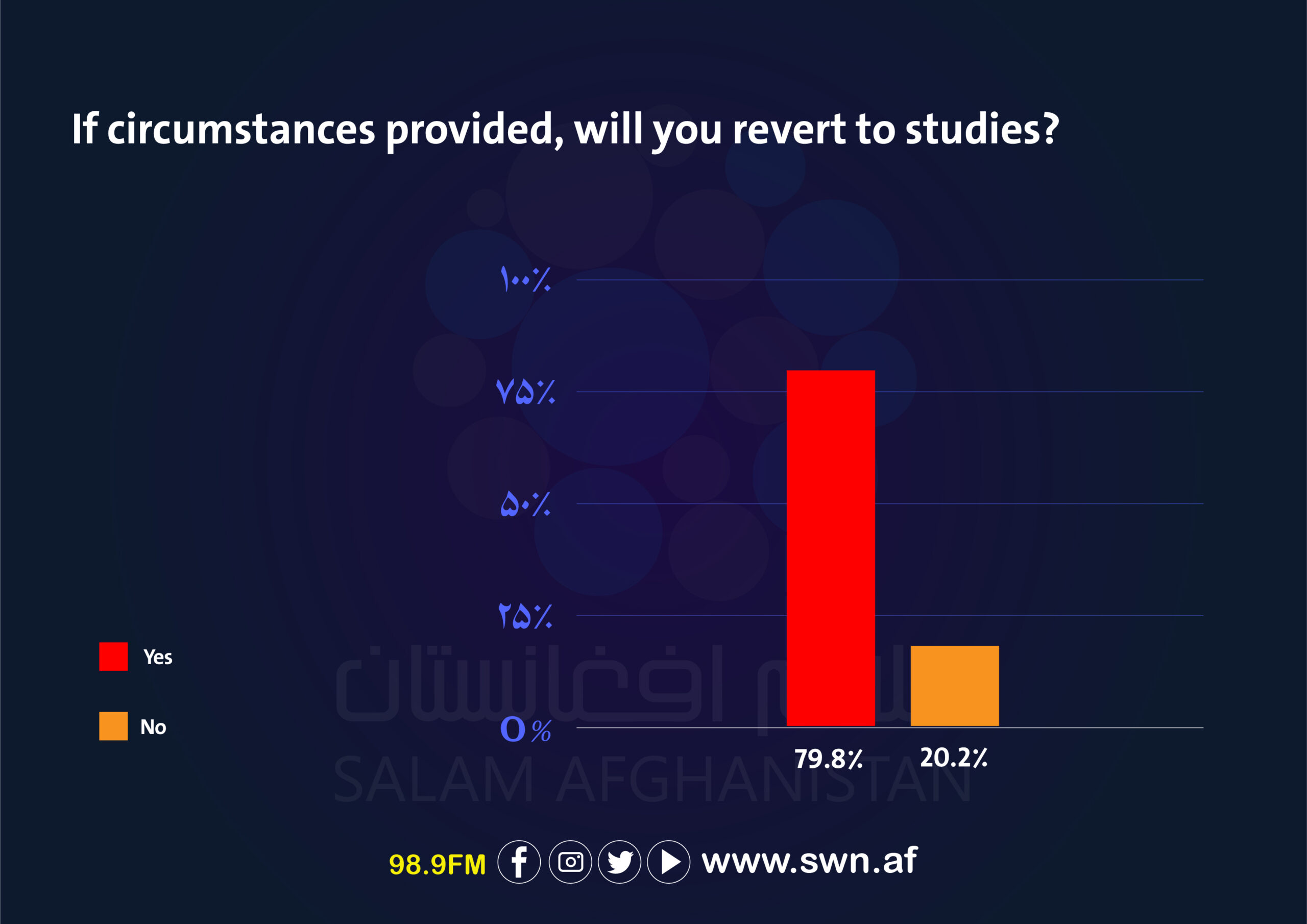
The respondents views on the role of education in the society was also examined, and 78.6% said that the education causes the growth and excellence of the society; 19.8% said that education is effective in the society, and 1.5% said that education has no beneficial effect in society.
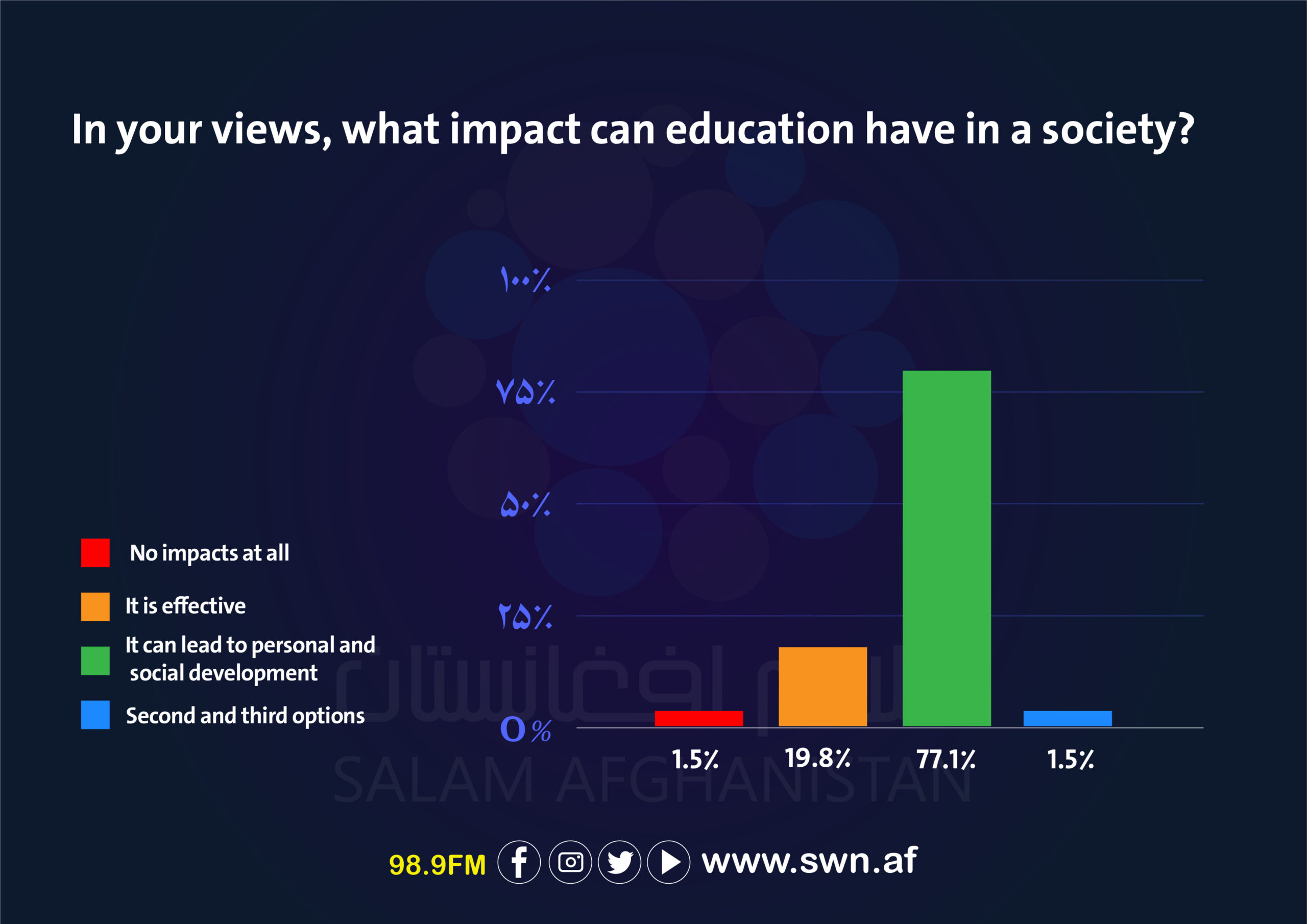
In this survey, the effectiveness of education on the lives of educated youths and their valuing of education, their opinions about educational conditions in the country have also been examined.
58.8% educated young people who participated in this survey, said that educational conditions for young individuals in Afghanistan are less favorable; 26.7% said that the conditions for education in the country are not favorable at all, but another 14.5% said the conditions in Afghanistan are suitable for young people.
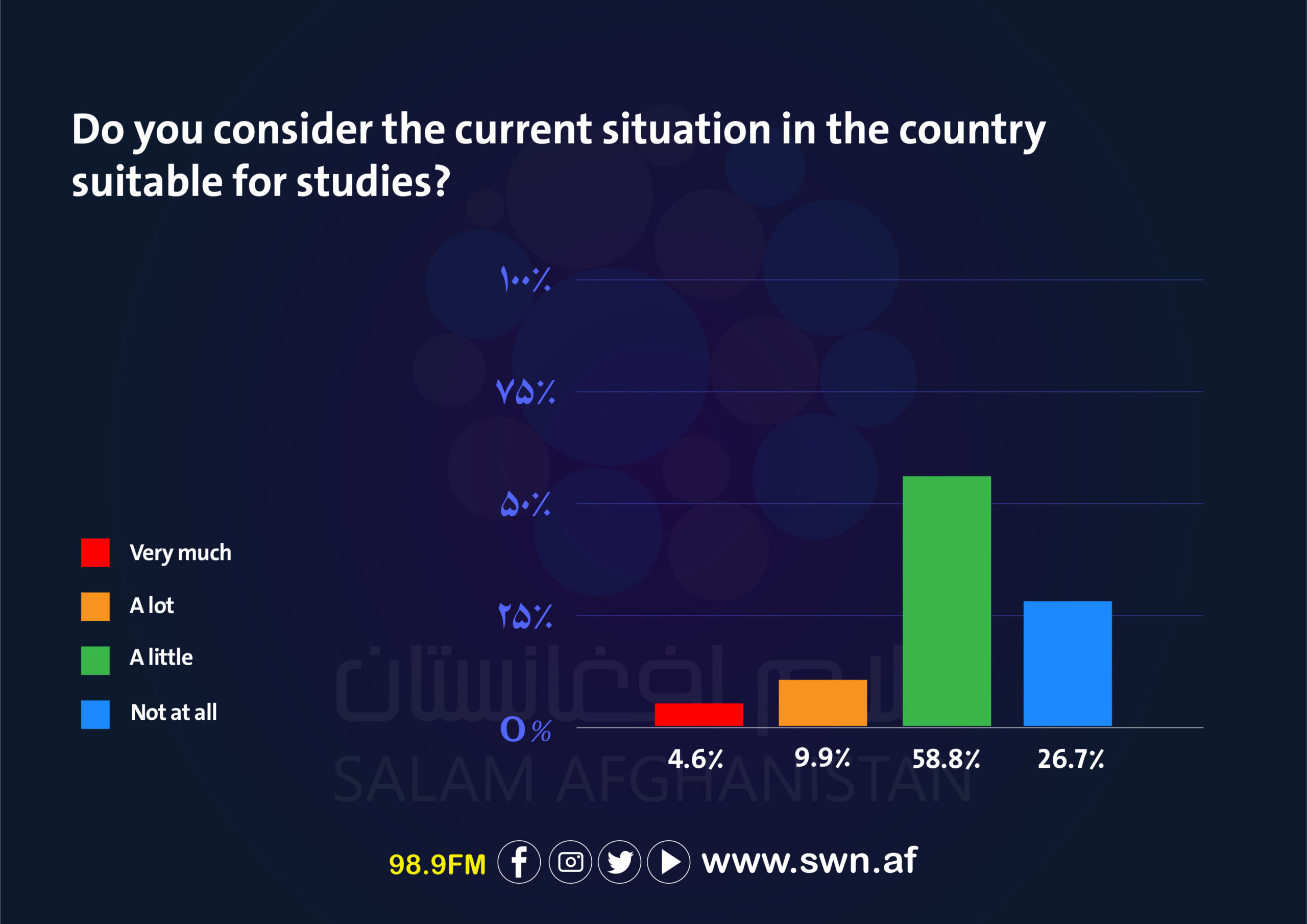
Some 85.5% of these young people stated that they valued the education they received very much; 10.7% said that they value their education a lot; 2.3% said that they value their education less and another 1.6% said that their education has no importance and value for them at all.
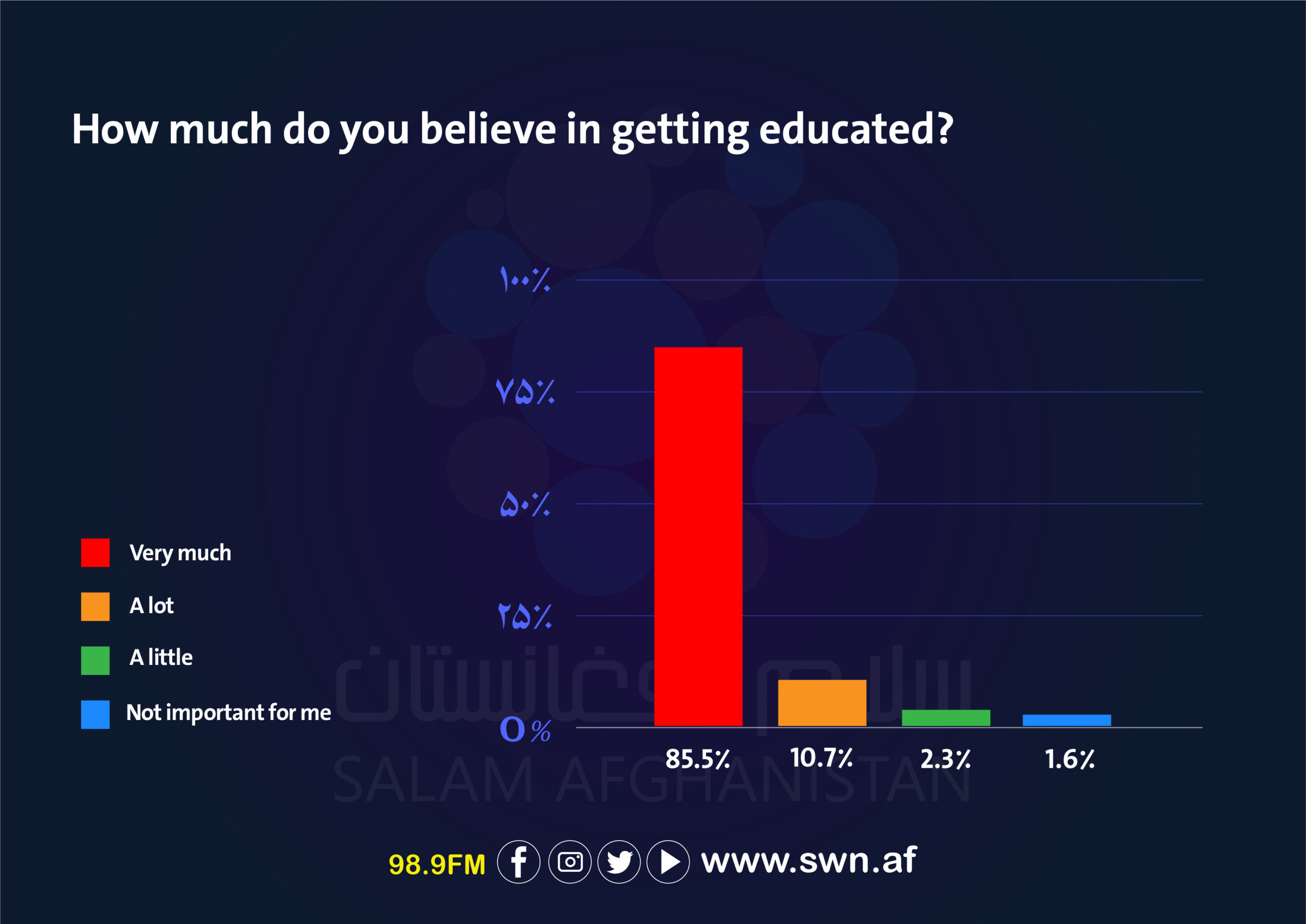
Some 55% of young people said that education has been very much effective, 30.5% said that it has been very effective, and 14.5% said that it was less effective.
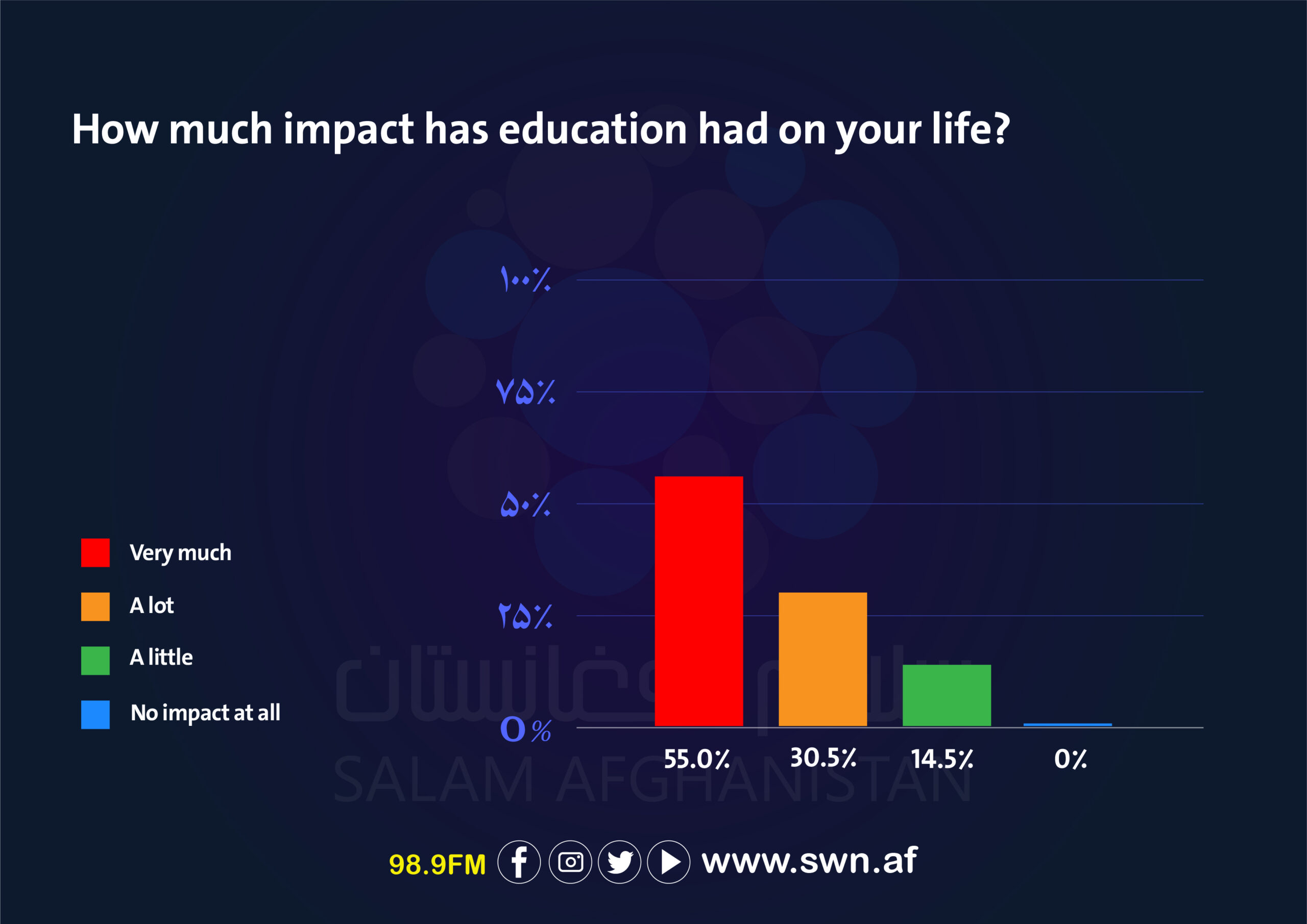
The field of work and education for educated youths was also examined in the survey; 45.8% said that they work according to their field of study; 29% said that they work against the field of studies, 13.7% said that their field of work and education are somewhat compatible, and 11.5% said that they are jobless.
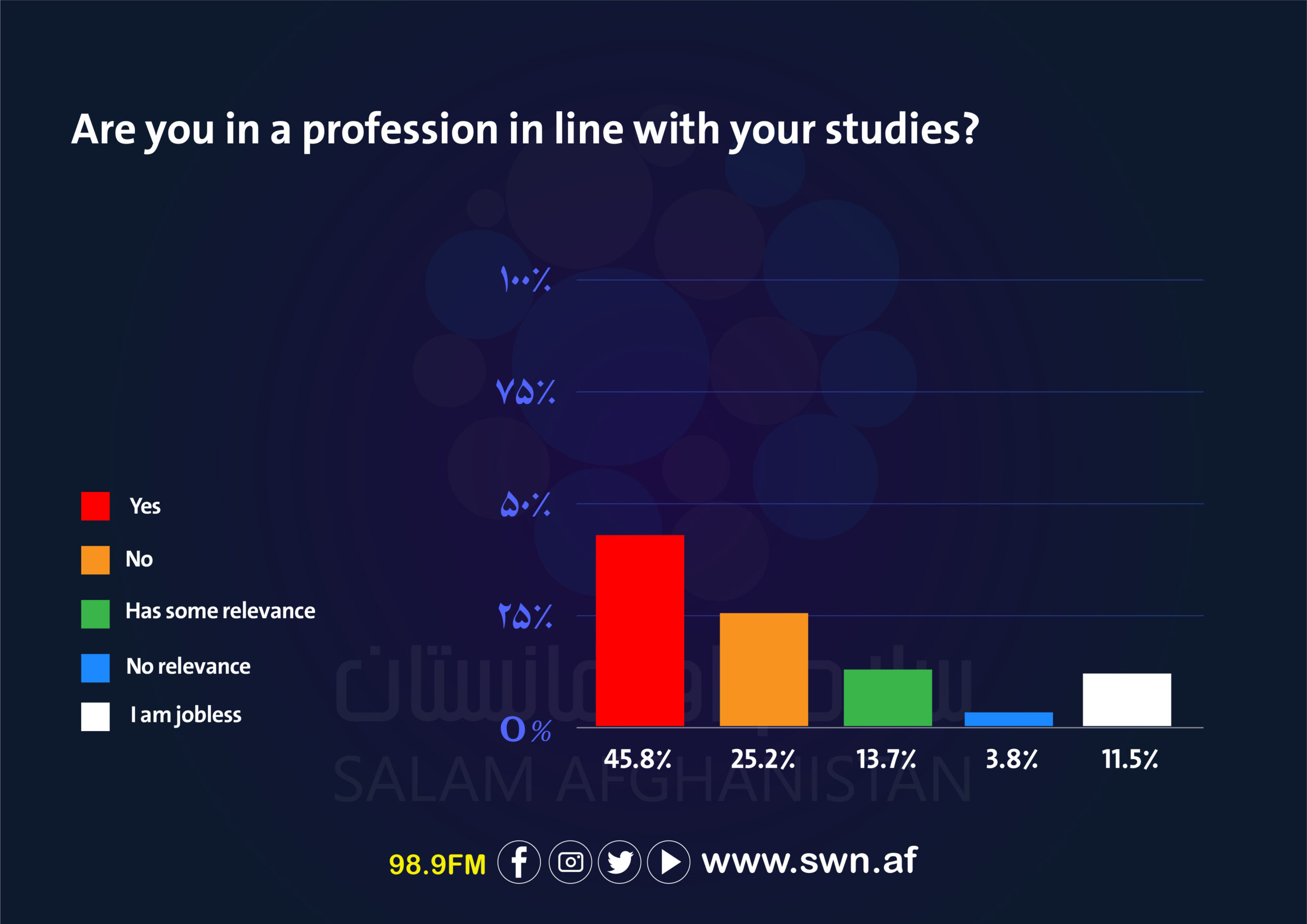
The level of satisfaction with income among educated young people who participated in this survey has also been checked. 44.2% of participants said that they are less satisfied with their income; 34.1% said that they are not satisfied at all; 12.4% said that they are very satisfied, and another 9.3% said that they are very much satisfied with their income.

Recommendations
Considering the results obtained from this survey, the following recommendations are presented:
- Creating facilities for young people to obtain higher education.
- Providing job opportunities and benefiting from higher education for young people.
- Creating motivation and hope for young people.
- Providing an up-to-date teaching method for young people.






